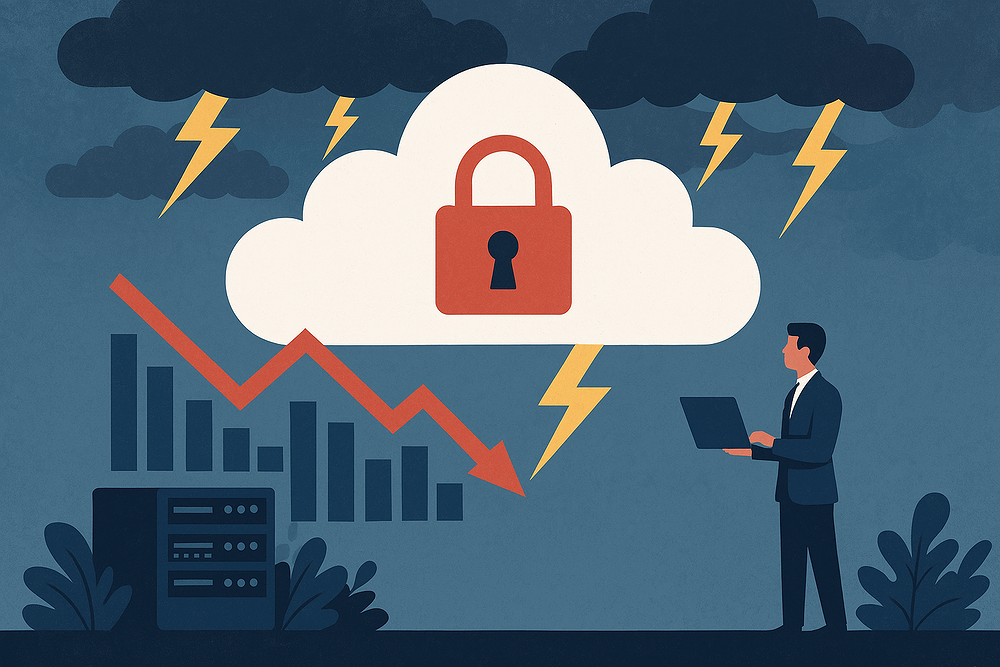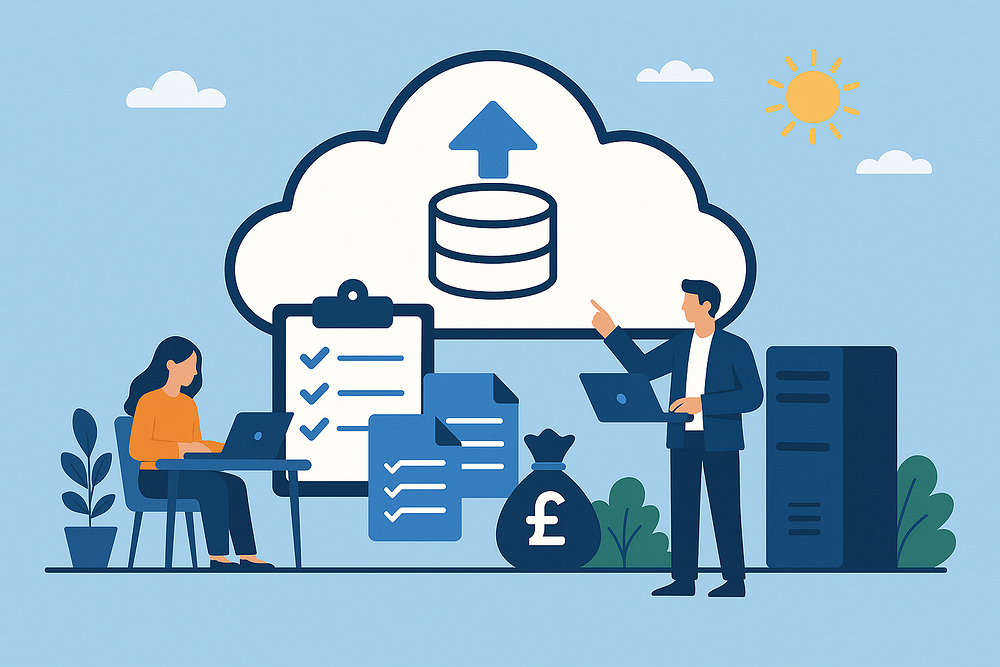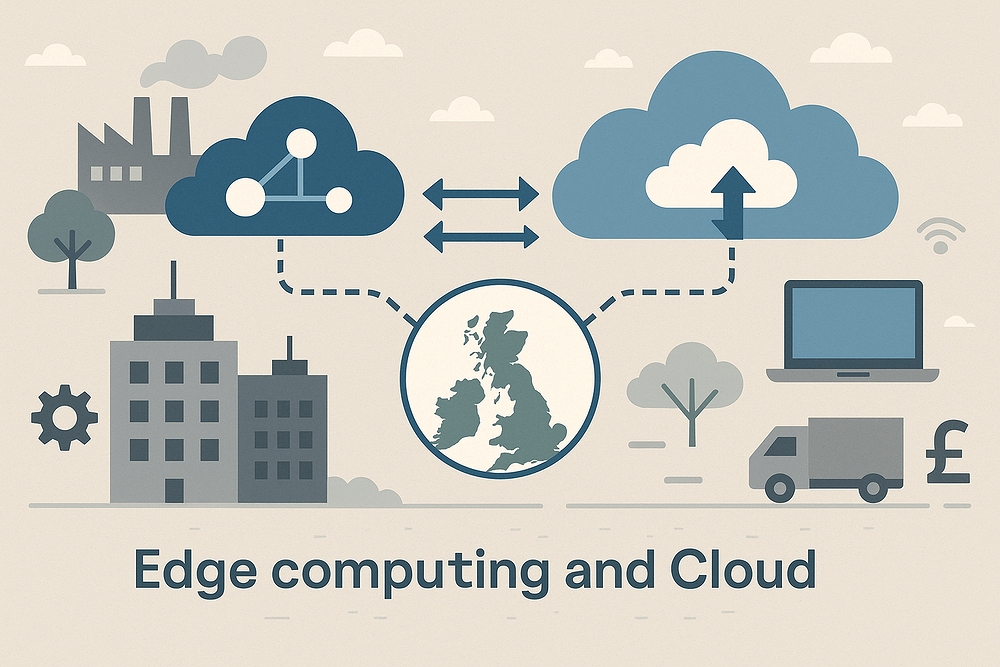Cloud Disaster Recovery: How UK Businesses Can Ensure Business Continuity in Uncertain Times

Cloud Disaster Recovery: How UK Businesses Can Ensure Business Continuity in Uncertain Times
In today's digital-first business landscape, your company's data isn't just valuable—it's essential for day-to-day operations. From customer information and financial records to operational systems and communications, the loss of critical data can bring even the most resilient organisations to a standstill. With increasing cybersecurity threats, extreme weather events, and general business uncertainty, UK businesses must prioritise disaster recovery planning. Cloud-based disaster recovery solutions offer a robust, accessible way to ensure business continuity, even in the face of significant disruptions.
Understanding Disaster Recovery in the Cloud Era
Disaster recovery (DR) isn't a new concept, but cloud computing has revolutionised how businesses approach it. Traditional disaster recovery often involved maintaining expensive secondary data centres, complex backup systems, and detailed technical procedures that required substantial expertise to implement and manage.
Cloud disaster recovery, by contrast, leverages the infrastructure and services provided by cloud computing platforms to create more flexible, scalable, and often more cost-effective solutions. Instead of investing in redundant physical infrastructure, businesses can utilise cloud platforms to store backups, replicate systems, and even run entire business operations when primary systems fail.
Why Cloud Disaster Recovery Matters for UK Businesses
For UK businesses, particularly small and medium enterprises (SMEs), cloud disaster recovery offers several significant advantages:
1. Protection Against Multiple Threats
The UK faces various disaster risks, from flooding and severe weather to cybersecurity threats like ransomware attacks. In 2023, the National Cyber Security Centre reported that 39% of UK businesses identified cybersecurity breaches or attacks, with the average cost of a data breach reaching £19,400 for medium-sized businesses. Cloud disaster recovery provides protection against these diverse threats.
2. Regulatory Compliance
With regulations like the UK GDPR and industry-specific requirements, UK businesses must ensure they can recover data promptly in the event of a disaster. Cloud disaster recovery solutions often include compliance features that help businesses meet these obligations without developing complex systems internally.
3. Affordable Scalability
Cloud solutions allow businesses to scale their disaster recovery capabilities based on need. Rather than making large capital investments, you can adjust your disaster recovery resources up or down as your business grows or as your risk profile changes.
4. Competitive Necessity
In a competitive marketplace, extended downtime can mean losing customers to competitors. A robust disaster recovery plan demonstrates your business's resilience and commitment to service continuity—increasingly important factors in supplier selection processes.
Key Components of Cloud Disaster Recovery
For businesses new to cloud disaster recovery, understanding these core components can help you develop an effective strategy:
Backup and Recovery
The foundation of any disaster recovery plan is reliable data backup. Cloud providers offer various backup options, from simple file storage to complete system images. The key considerations are:
- Recovery Point Objective (RPO): How much data can you afford to lose? This determines how frequently backups need to occur.
- Recovery Time Objective (RTO): How quickly do you need to restore operations? This influences the type of backup solution you select.
Modern cloud backup solutions offer features like incremental backups (only saving changes), deduplication (removing redundant data), and compression (reducing storage requirements), making them more efficient and cost-effective than traditional methods.
System Replication
Beyond simple backups, cloud disaster recovery often includes replicating entire systems—including applications, configurations, and data—to cloud environments. When disaster strikes, these replicated systems can be activated quickly, minimising downtime and business disruption.
Automated Testing and Validation
One of the most valuable aspects of cloud disaster recovery is the ability to test your recovery plans regularly without disrupting business operations. Many cloud providers offer automated testing tools that verify your backups are complete and your recovery processes work as expected.
Implementing Cloud Disaster Recovery: A Practical Approach for UK Businesses
Implementing an effective cloud disaster recovery solution doesn't need to be overwhelming. Here's a straightforward approach that works for many UK businesses:
1. Assess Your Business Requirements
Begin by understanding what's truly critical to your business operations:
- Which systems and data would stop your business functioning if lost?
- How quickly would you need these systems restored?
- What regulatory requirements must you meet for data protection?
This assessment helps prioritise your disaster recovery efforts and resources.
2. Choose the Right Cloud Partner
Not all cloud service providers offer the same disaster recovery capabilities. Look for:
- UK-based data centres or EU/UK compliant ones to address data sovereignty concerns
- Experience working with businesses of your size and in your industry
- Clear service level agreements (SLAs) regarding recovery times and data protection
- Strong security credentials and compliance certifications
3. Develop a Comprehensive Plan
Your disaster recovery plan should include:
- Clear roles and responsibilities during a disaster event
- Step-by-step recovery procedures
- Communication plans for staff, customers, and partners
- Regular testing schedules and improvement processes
4. Implement in Phases
Rather than attempting to move all systems to cloud disaster recovery at once, consider a phased approach:
- Begin with the most critical systems
- Test thoroughly before moving to the next phase
- Adjust your approach based on lessons learned
5. Test Regularly and Improve Continuously
Even the best disaster recovery plans fail without regular testing. Cloud solutions make testing easier by allowing you to verify recovery procedures without disrupting production systems.
Common Pitfalls to Avoid
When implementing cloud disaster recovery, be wary of these common mistakes:
Overlooking Network Dependencies: Ensure your recovery plan accounts for the network infrastructure needed to access recovered systems.
Ignoring Security: Disaster recovery environments need the same security controls as your primary systems.
Neglecting Staff Training: Technical solutions are only effective if your team knows how to activate and manage them during a crisis.
Focusing Only on Technology: Effective disaster recovery includes people and processes, not just technical solutions.
Conclusion: Building Business Resilience Through Cloud Disaster Recovery
In today's uncertain business environment, disaster recovery planning isn't just an IT consideration—it's a fundamental business requirement. Cloud disaster recovery offers UK businesses of all sizes a practical, scalable approach to ensuring business continuity even when facing significant disruptions.
By leveraging cloud technologies, companies can develop disaster recovery capabilities that were once available only to large enterprises with substantial IT budgets. The result is improved resilience, reduced business risk, and the confidence that comes from knowing your business can weather whatever challenges arise.
As you consider your business's disaster recovery needs, remember that the goal isn't just recovering data—it's maintaining the continuity of your business operations and preserving the trust of your customers and partners. Cloud disaster recovery provides the foundation for achieving these critical business objectives in an increasingly digital world.
Talk to us about your next project
Our team of experts is ready to help bring your ideas to life with solutions tailored to your business.
Get in Touch

